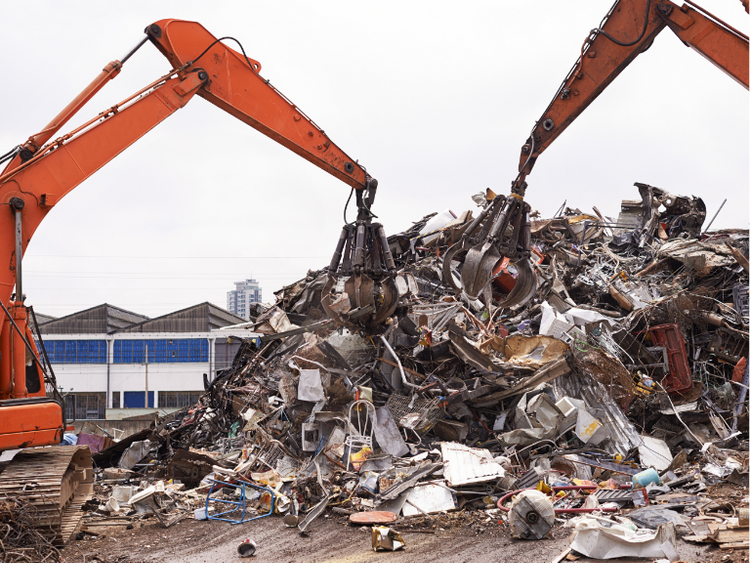Scrap Prices North America

CRU: Scrap Prices Continue Fall, Decouple From Other Metallics
Written by Aaron Kearney-Keaveny
November 20, 2022
By CRU Research Analyst Aaron Kearney-Keaveny, from CRU’s Steelmaking Raw Materials Monitor
The CRU metallics price indicator (CRUmpi) for November fell by 3.5% month-on-month (MoM), to 298.3, which is the lowest level since December 2020. Global scrap demand continues to be undermined by weak steel market fundamentals in key markets.
Over the past few months, scrap supply has been higher than demand in several regions, lowering delivery lead times and forcing scrap suppliers to reduce prices. Despite the falls in prices, trade volumes have been limited as buyers expect further price falls and have sufficient inventory at hand.
Scrap Prices Continue to Fall with Low Volumes of Trade
We continue to believe that steel market sentiment across key metallics demand centers in North America, Europe, and China will remain subdued as we approach the end of 2022 due to poor macroeconomic conditions. Mills have been reducing their raw material inventories and delaying purchases to protect cash flows, which puts their production capabilities at risk in the event of supply disruptions.
In the US, November marks the second consecutive month of shredded scrap holding a premium to #1 busheling, a trend last observed in 2016. This is because supply of prime scrap has stayed robust due to higher automotive output while that of obsolete is affected by approaching winter and disincentivized collection due to subdued prices.
In Europe, scrap prices have stabilized MoM, despite falls in energy prices removing some cost support. A key development in the European market is that the variable implementation of government policies to control and reduce energy and electricity prices has upset the competitive landscape between European steelmakers.
Italy’s energy subsidy has led to greater demand for Italian scrap, which has created a different trend in Italian prices compared to the rest of Europe. However, Italian scrap price increases have now slowed compared to last month.
In Asia, ample scrap supply alongside weak steel production has dragged down prices again this month. Chinese domestic scrap prices suffered huge declines in October, falling RMB400 per ton between the start and end of the month, only to find some support in early November.
In the rest of Asia, south-eastern prices stayed subdued, while southern scrap prices have found some support from continued scrap imports by India and Bangladesh, although this has slowed. Japanese exporters have also been offering larger volumes to South Asia due to low domestic demand and low buying interest in other major destinations.
Ore-Based Metallics Recover from CIS Shock
The support for ore-based metallics prices in the last month – due to the escalation of the war in Ukraine – was short-lived. Nevertheless, the premium over scrap remains wider than historical levels. This was particularly noticeable for Italian HBI import prices, which have returned to where they were back in September.
Pig iron prices continue to decouple from scrap but hold steady or rise elsewhere. Note that the fall in Italian pig iron prices was more of a correction from overly elevated levels, to which they still remain high. Suppliers of pig iron to the US, particularly those based in Brazil, are citing increases in input costs (such as that of charcoal) as a reason not to lower prices further.
Outlook: Scrap Demand to Fall While Availability Will Improve
We expect that metallics demand will remain weak for the remainder of Q4 alongside inventory management and the continued weakness in finished steel production and demand. Scrap prices are expected to remain rangebound in the next month because availability will also start to fall.
Further ahead, CRU continues to believe that reduced scrap supply because of low collection rates during winter in the Northern hemisphere will provide supply-side support to prices. However, lower steel production, and lower steel prices and margins, will continue to undermine scrap prices.
Weak macroeconomic conditions (and the ongoing energy crisis in Europe) will keep steel and metallics market sentiment subdued as we enter 2023. While the CIS region has exerted less influence on prices recently, the development of the war in Ukraine does still offer a key risk to global supply.
This article was originally published on Nov. 17 by CRU, SMU’s parent company.
Request more information about this topic.
Learn more about CRU’s services at www.crugroup.com
Aaron Kearney-Keaveny
Read more from Aaron Kearney-KeavenyLatest in Scrap Prices North America

HRC vs. prime scrap spread widens in June
The price spread between HRC and prime scrap widened in June.

Ferrous scrap pricing sideways in June
Ferrous scrap prices in the US have remained stable from May to June.

HRC vs. scrap spread widens over $150/ton in March
The HRC vs. prime scrap spread increased again in March.

HRC vs. prime scrap spread increases in February
The price spread between hot-rolled coil (HRC) and prime scrap widened in February ahead of the implementation of President Trump’s tariffs on steel.
HRC vs. prime scrap spread narrows again in January
The price spread between hot-rolled coil (HRC) and prime scrap continued to narrow in January, according to SMU’s most recent pricing data. While SMU’s average HRC price edged down week over week (w/w), it rose compared to a month ago. The January price for busheling also increased from December. Our average HRC price as of […]
